By 2047, Humanoid AI Partners Transform Every Home and Workplace Globally #Trend
By 2047, Humanoid AI Partners transform every home & workplace globally. Explore this pivotal Robotics trend predicting a profound reshaping of daily life and work. Discover the path to this future.
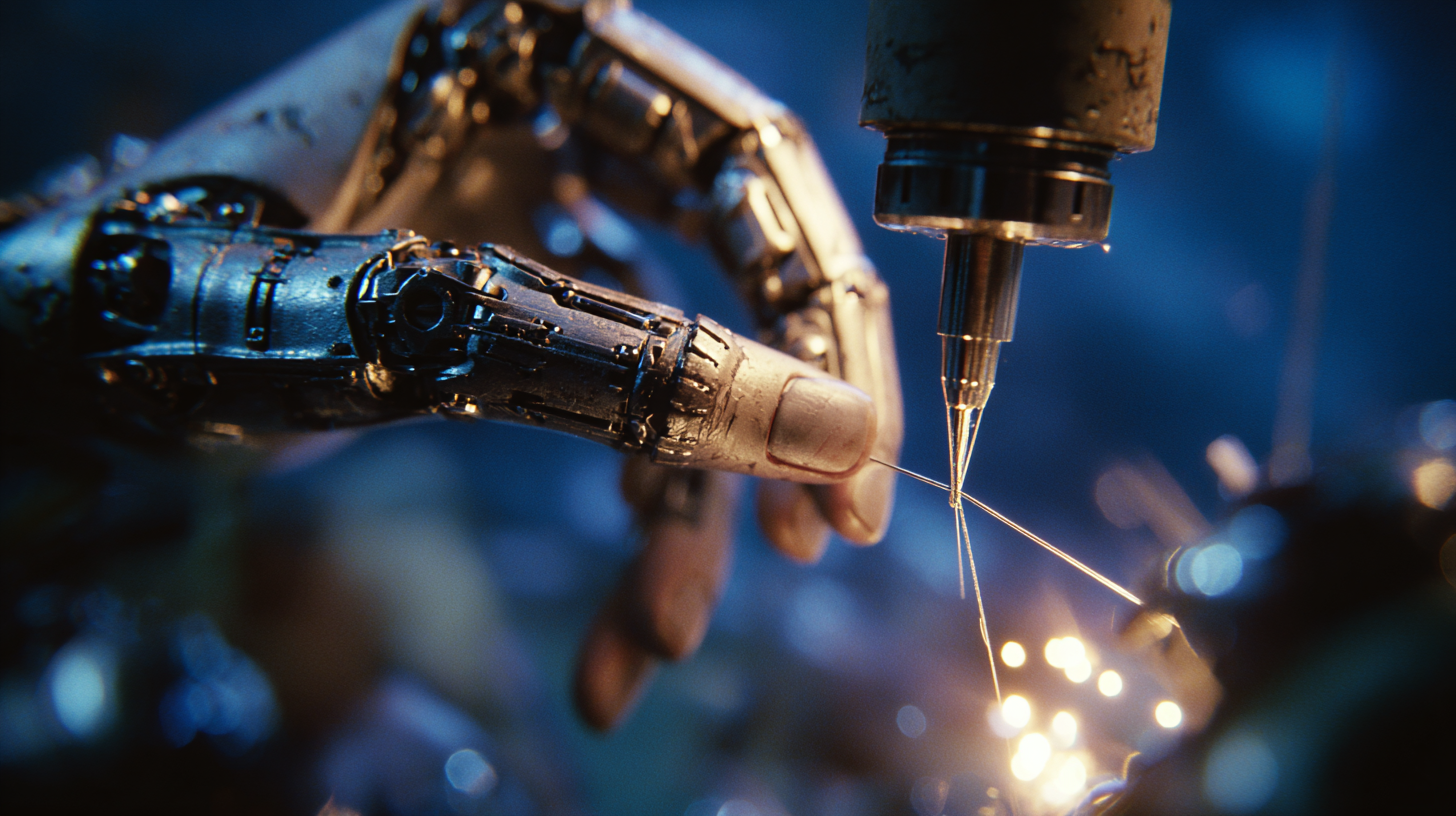
Mark your calendars. By 2047, the prediction we're making at Trend Horizon isn't just about robots; it's about the dawn of a new kind of companion. Humanoid AI Partners won't just be in factories; they will seamlessly integrate into every home and workplace globally, reshaping daily life as profoundly as the internet did. This isn't just the next phase of automation; it's a fundamental re-architecture of human existence. 🌍 #HumanoidFuture
This isn't mere automation; it's the rise of intelligence in embodied form, designed to interact with our world, our tools, and ourselves on a profoundly new level. The vision is clear: tireless, capable, and increasingly sophisticated AI partners ready to assist, manage, and even collaborate in ways previously confined to science fiction. The scale of integration is set to be exponential. 💡 #EmbodiedAI
How do we get from today's cautious factory trials to a world teeming with these advanced machines? In this essential Trend Horizon analysis, we dissect the journey of Humanoid Robotics. We'll navigate its fascinating past, examine its current cutting-edge reality and pressing challenges, and chart the electrifying future trajectory that will lead to that 2047 vision. We will also explore this phenomenon through our unique frameworks, such as Trend Horizon's "Humanoid Architectural Blueprint" and the "Principle of Embodied Economic Reversal", to provide a distinct perspective on this transformative trend. ⏳
Are you ready to understand the forces building the future workforce and companionship? Step with us beyond the horizon and delve into the past, present, and transformative future of Humanoid Robotics. 🚀 #RoboticsRevolution
I. The Humanoid Robotics Revolution: Defining the Next Frontier 🧠 #TrendExplained
Humanoid Robots, machines meticulously crafted to mirror human appearance, movement, and interaction, have long been a captivating staple of science fiction. Characters like C-3PO from Star Wars and Data from Star Trek painted vivid pictures of robots capable of human-like thought, learning, and communication. Today, at Trend Horizon, we observe this vision rapidly transitioning from fantasy to a tangible, emerging reality. Humanoid Robotic Agents, increasingly imbued with cognitive capabilities, the potential for nuanced emotional intelligence, and adaptive learning systems, are no longer mere figments of imagination but are actively beginning to shape industries and the very contours of our daily lives.
To decode the rise of humanoid robotics, Trend Horizon presents the "Humanoid Architectural Blueprint". A strategic framework built on three foundational pillars:
- The Intrinsic Design ("what it is?") - detailing the technical foundations, including physical architecture and AI integration.
- The Embodied Interface ("why it looks like us?") - exploring the functional logic behind the human form as a universally adaptable interface.
- The Convergent Genesis ("what it’s becoming.") - mapping their evolution toward general-purpose, versatile capabilities.
Understanding these pillars is key to understanding the trend itself. 🔑
1) The Intrinsic Design: Form Meets Intelligence
At their core, humanoid robots are designed to resemble and mimic human form and functionality. This deliberate anthropomorphic design - the first pillar of our Blueprint - is not merely aesthetic; it serves a crucial purpose: enabling these machines to interact more naturally and effectively with humans and the environments that humans have built and inhabit. This fundamental characteristic distinguishes them from other robotic forms. The choice to pursue a human-like structure is profoundly functional, predicated on the goal of seamless integration into a world already optimized for human ergonomics. The physical human-like form serves as an advanced vessel for increasingly complex Artificial Intelligence (AI). Indeed, this trend is as much about AI advancement as it is about sophisticated mechanical engineering. The historical evolution from earlier, "unintelligent" robots, which could only execute pre-programmed tasks, to modern AI-enabled machines marks a pivotal shift. The physical and AI capabilities are co-evolving, each driving and depending on the other for progress. 🧠
2) The Embodied Interface: Engineered for a Human-Centric World
The second pillar of our Humanoid Architectural Blueprint, the "strategic rationale", explains why the humanoid form is so pivotal. The strategic decision to develop robots with a human-like structure stems from a clear-eyed assessment of the world they are intended to operate in. Humanoid robots, by their very design, hold the potential to utilize tools, equipment, and infrastructure originally created for human use; they can climb stairs, open doors, and manipulate objects in ways that non-anthropomorphic robots would find challenging, if not impossible, without extensive environmental modifications. This inherent adaptability to "seamlessly slot into our human world" is a cornerstone of their projected value, minimizing the need for costly and disruptive retrofitting of existing spaces, particularly in established "brownfield" settings. Human environments - cities, factories, offices, and homes - are fundamentally designed around human ergonomics. Adapting these vast and varied spaces for specialized, non-humanoid robots on a global scale would represent a colossal undertaking. Humanoid robots, conversely, aim to circumvent this issue by conforming to pre-existing human-centric designs. #HumanCenteredDesign
Beyond mere physical compatibility, the emphasis on "natural interaction" points towards a future where human-robot collaboration transcends purely task-based exchanges. If humanoids can communicate and behave in ways that humans intuitively understand and respond to, their integration into personal and professional spheres could become much deeper and more effective. This suggests a trajectory towards robots that are not merely tools but sophisticated collaborators, assistants, or even companions, especially in service-oriented roles, healthcare, and domestic applications where nuanced interaction is paramount. 🤝
3) The Convergent Genesis: The Rise of General-Purpose Platforms
The final pillar in our Blueprint, the "Convergent Genesis", highlights that the emergence of sophisticated humanoid robotics is not an isolated phenomenon. Rather, it represents the culmination and convergence and synthesis of decades of progress in more specialized fields of robotics; from the robust automation capabilities honed by industrial robots in sectors like automotive manufacturing, to the increasing intelligence and user-friendliness of consumer robots. These precursors have contributed essential technologies, components, and interaction concepts that are now being integrated into the more complex, general-purpose humanoids. 🔄
Humanoid robots aim to transcend the inherent limitations of their specialized predecessors by offering significantly greater adaptability and versatility. The evolution is marked by a shift from traditional robotic arms, designed for highly repetitive tasks in structured environments, to dynamic humanoid platforms capable of learning in real-time and adapting their behavior through the power of advanced machine learning algorithms and research into Artificial General Intelligence (AGI). This allows humanoids to inherit the legacy of robustness and precision from industrial robotics while incorporating the intuitive interaction paradigms pioneered by consumer robotics. While the hardware evolution is significant, the truly revolutionary aspect, as Trend Horizon sees it, lies in the AI-driven integration that endows these machines with their general-purpose ambition. This shift towards "general-purpose" capabilities signifies a fundamental change in the robotics paradigm itself, enabling them to learn from new data, adapt to changing circumstances, and perform a wide array of functions, much like humans do. It’s this AI-driven flexibility that truly defines their disruptive potential compared to any robotic generation before them. #GeneralPurposeAI #RoboticEvolution
Humanoid Robotics as a Major Transformative Trend
The confluence of factors - the dream of human-like machines becoming reality, the strategic advantages of their form, and their evolution from specialized predecessors - firmly establishes humanoid robotics as a major, potentially society-altering trend. This is not merely an incremental improvement in automation but represents a foundational shift in how machines will operate, interact, and integrate into human society. Rapid advancements in enabling technologies, particularly in AI, sensor technology, materials science, and power systems, are converging with powerful economic drivers such as persistent labor shortages, the imperative for increased efficiency, and the strategic reshoring of manufacturing. This synergy is attracting growing investment and focus from both established technology giants and agile startups, further fueling the pace of innovation.
The current trajectory suggests an imminent inflection point. Humanoid capabilities in AI-driven decision-making, mobility, and particularly dexterity are advancing at a remarkable pace. Simultaneously, the costs associated with producing these complex machines are beginning to decline and are projected to fall significantly further. Historically, when a technology achieves a critical threshold of both high capability and economic viability, its adoption tends to accelerate dramatically. The dual trend of rapidly improving performance and decreasing costs strongly indicates that humanoid robotics is approaching such a pivotal moment, poised to move beyond niche applications towards broader market penetration and multi-industry adoption, potentially sooner than many anticipate. The sheer breadth of potential applications - from manufacturing and logistics to healthcare, domestic assistance, and hazardous environment intervention - underscores its pervasive potential to ripple across nearly every aspect of human life and economic activity, justifying its classification as a major transformative trend for the 21st century.
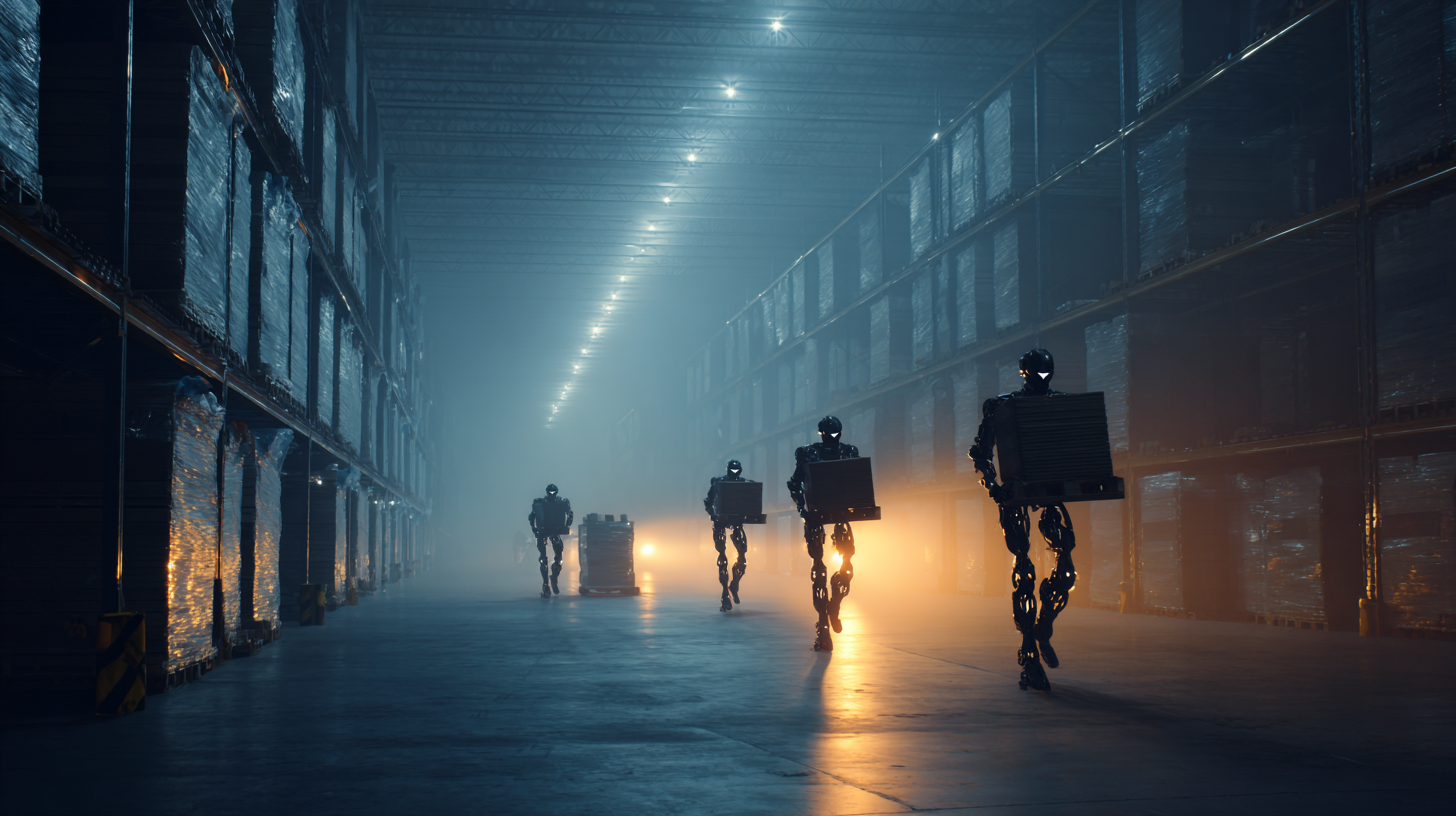
II. From Myths to Mechanics: Charting the History of Humanoid Robotics 🕰️🔩 #TrendHistory
The aspiration to create artificial beings in our own image is not a recent phenomenon. It is a thread woven through centuries of human mythology, art, and engineering, reflecting a deep-seated fascination with the nature of life and intelligence. Understanding this long history provides crucial context for appreciating the rapid advancements in humanoid robotics today.
Ancient Dreams and Early Automata: The Seeds of Artificial Humans
Our journey into the past of humanoid robotics begins not with silicon and steel, but with myths and marvels. Greek mythology tells of Hephaestus, the god of blacksmiths, who crafted various humanoid automata, including golden handmaidens. Ancient Egyptians were known to have "speaking statues" of their deities, often made of wood with jointed limbs, cleverly operated by temple priests. Beyond myth, early mechanical devices with human-like functions appeared in various cultures. In 5th century BCE China, the engineer Yan Shi is said to have presented King Mu with a life-size, human-shaped automaton. Perhaps one of the most remarkable early contributors was the 13th-century Muslim engineer Ismail al-Jazari. His "Book of Knowledge of Ingenious Mechanical Devices" included designs for several humanoid automata, including a waitress robot that could serve drinks and a boat carrying four mechanical musicians; an early pioneer in programmable human-like machines! 🤯 Al-Jazari's creations, utilizing cams and camshafts, demonstrate a sophisticated understanding of mechanics and automated sequences, bridging ancient knowledge with Renaissance ingenuity. These early endeavors, often intertwined with entertainment or ceremony, reveal our deep-seated fascination with mimicking life and agency, laying conceptual groundwork. #AncientRobots #MechanicalMarvels
Renaissance Visions and Clockwork Marvels: Da Vinci and Early Mechanics
The European Renaissance and the subsequent Enlightenment period witnessed a shift towards more systematic, engineering-driven approaches to automata, fueled by advancements in clockwork mechanisms. Around 1495, the genius Leonardo Da Vinci sketched detailed plans for a "Mechanical Knight", envisioned to sit up, wave its arms, and move its head and jaw. While its construction is uncertain, the design was groundbreaking. The 18th century, in particular, saw a flourishing of complex automata. French inventor Jacques de Vaucanson became famous for his automated "Flute Player" and his celebrated "Digesting Duck", which could flap its wings, eat, and excrete, showcasing astonishing mechanical sophistication. In Japan, Hisashige Tanaka created intricate "Karakuri Ningyō" automata. This period marked a significant transition: automata moved from artistic objects towards demonstrable feats of engineering, laying further essential groundwork for robotics as a formal discipline. #ClockworkCreations
The 20th Century: Electrification, Computation, and the Dawn of Modern Robotics
The 20th century electrified our ambitions and heralded the true birth of modern robotics! ⚡️ Early humanoids like "Eric" (1928) and Westinghouse's "Elektro" (1939) wowed audiences at exhibitions, walking, talking (reciting), and even smoking cigarettes; more spectacle than substance, perhaps, but they fueled the public imagination. While these early humanoids were often for show, parallel developments laid foundations for functional robots. William Grey Walter's robotic "Turtles" (1948-49), Elsie and Elmer, exhibited complex behaviors like finding a charging station using simple circuits. The 1950s saw the formal beginnings of Artificial Intelligence as a field. A pivotal moment arrived in 1954 when George Devol invented the "Unimate", the world's first programmable robotic arm, later developed with Joseph Engelberger. First installed on a General Motors assembly line in 1961, Unimate transformed manufacturing by handling hazardous tasks. This marked a crucial development: the programmable robot, capable of performing varied tasks based on stored instructions, became the cornerstone for all future robotic advancements. Meanwhile, "SRI's Shakey" (1970) became the first mobile robot to reason about its surroundings, a significant AI milestone. The 20th century thus saw a critical split: industrial robotics surged with practical machines, while humanoid endeavors often emphasized appearance. The later, crucial re-convergence would require integrating AI to bridge this gap. #IndustrialRevolution2 #ProgrammableBots
Asimov's Laws and the Fictional Imagination: Shaping Our Perceptions
Science fiction played a colossal role in shaping our perceptions and the ethical landscape of robotics. We must tip our hats to Czech writer Karel Čapek, who introduced the word "robot" in his 1920 play "R.U.R." (Rossum's Universal Robots), depicting creatures for tedious labor. And who could forget Isaac Asimov? Though he never built a robot, his "Three Laws of Robotics", first penned in his 1942 short story "Runaround", became foundational in robotic ethics:
- A robot may not injure a human being or, through inaction, allow a human being to come to harm.
- A robot must obey the orders given it by human beings except where such orders would conflict with the First Law.
- A robot must protect its own existence as long as such protection does not conflict with the First or Second Law.
These laws sparked critical thought into the responsible integration of robots and have inspired generations. Asimov's work presciently highlighted the need for ethical frameworks, a concern that has co-evolved with the technology.
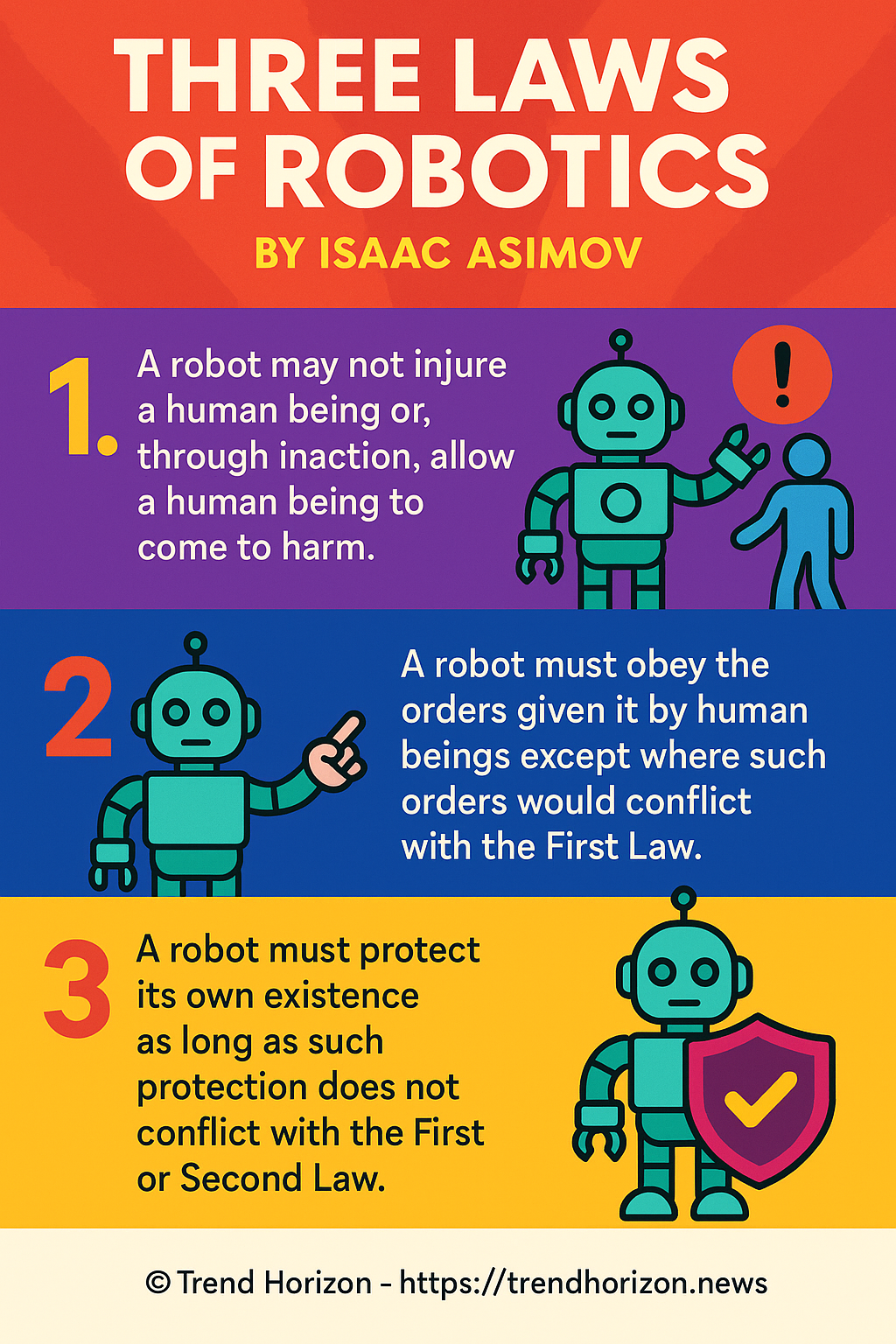
Fictional portrayals also set high public expectations. The "Rosie the Robot" expectation from "The Jetsons" (1962), a friendly, helpful home companion, continues to influence design goals and public acceptance criteria for domestic humanoids. 😉 #SciFiDreams #RoboticEthics
Key Milestones Leading to Today's Humanoids
The journey to today's sophisticated humanoids was marked by pivotal advancements. The Zero Moment Point (ZMP) theory, introduced by Miomir Vukobratović in the 1960s and vital for stable bipedal walking, became a cornerstone. In Japan, Professor Ichiro Kato at Waseda University developed the WABOT series, with WABOT-1 (1972) being a full-scale humanoid intelligent robot capable of walking and communicating. Honda's ASIMO, unveiled in 2000, was a game-changer, showcasing remarkable bipedal walking, stair-climbing, and human interaction. We then witnessed Boston Dynamics consistently push the limits of dynamic balance and mobility with robots like Atlas (various iterations since 2013), which could run, jump, and even perform backflips! 🤸 These breakthroughs demonstrated incredible advancements in locomotion, balance, and control systems, heavily fueled by the integration of Artificial Intelligence, sophisticated sensors, and powerful actuators. This convergence paved the way for humanoids that could begin to navigate and operate in our complex world. The integration of Large Language Models (LLMs) and Vision Language Models (VLMs) in the early 2020s, exemplified by Figure AI with OpenAI, further revolutionized interaction and task execution. #ModernMilestones #AIIntegration
This historical context, summarized in the table below, illustrates that today's breakthroughs are built upon centuries of imagination, engineering progress, and scientific discoveries.
| Era/Date | Key Development/Robot/Figure | Significance |
|---|---|---|
| Antiquity | Al-Jazari's Automata (e.g., waitress, musicians) | Early examples of programmable, human-like mechanical devices performing tasks. |
| c. 1495 | Leonardo Da Vinci's Mechanical Knight | One of the first recorded detailed designs for a humanoid robot. |
| 1737 | Jacques de Vaucanson's Automata (e.g., Flute Player, Digesting Duck) | Highly complex clockwork mechanisms demonstrating sophisticated mimicry of life. |
| 1928 | W. H. Richards' "Eric" | Early British humanoid robot capable of movement via remote/voice control. |
| 1939 | Westinghouse's "Elektro" | Famous walking, talking, smoking humanoid exhibit at the World's Fair. |
| 1954 | George Devol's "Unimate" | The first digitally operated and programmable industrial robot, revolutionizing manufacturing. |
| 1962 | Rosie the Robot (from "The Jetsons") | Iconic fictional domestic humanoid shaping public expectations for helpful home robots. |
| 1970 | SRI's "Shakey" | First mobile robot capable of reasoning about its actions and environment. |
| 1972 | Waseda University's WABOT-1 | World's first full-scale humanoid intelligent robot. |
| 2000 | Honda's ASIMO | Landmark humanoid robot demonstrating advanced dynamic walking and human interaction. |
| 2013-Present | Boston Dynamics' Atlas | Highly agile humanoid showcasing advanced dynamic balance, locomotion, and parkour capabilities. |
| Early 2020s | Integration of LLMs/VLMs (e.g., Figure 01 w/ OpenAI) | Enabling more natural language interaction and complex task execution based on verbal commands. |
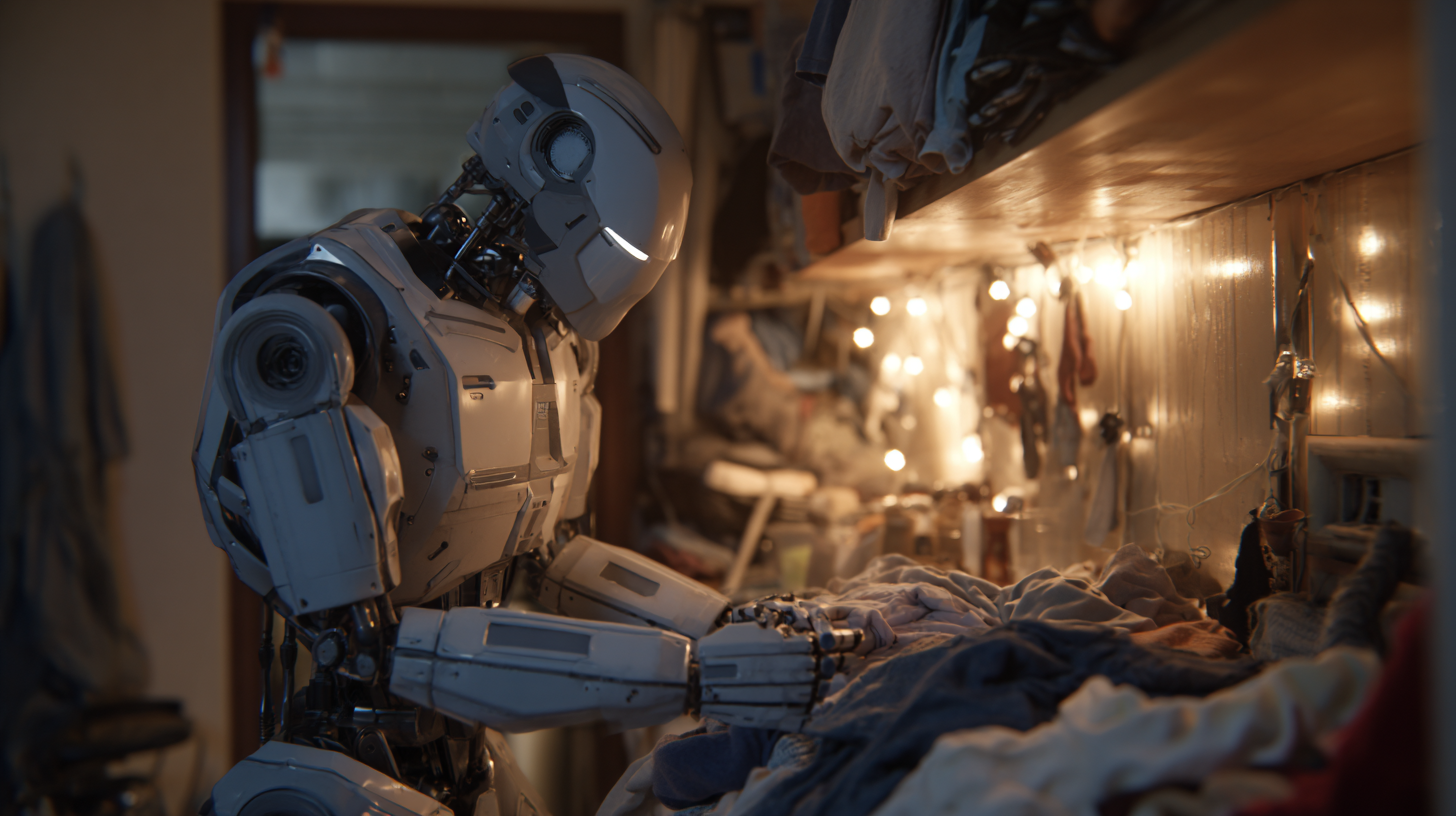
III. Humanoid Robotics: The Current State – Where Cutting Edge Meets Concrete Challenges 🦾🧱 #TrendInMotion
As we at Trend Horizon observe today's landscape, humanoid robotics is undeniably in a phase of accelerated evolution, taking its first, tentative strides into commercial reality. This surge is critically fueled by converging breakthroughs in Artificial Intelligence - particularly Large Language Models and Visual Language Models - alongside persistent innovation in sensor arrays, materials science, and actuator mechanics. Today's humanoids are beginning to demonstrate capabilities once confined to research labs, performing tasks and interacting in ways that signal a potential shift from rigidly programmed machines to more adaptive, general-purpose collaborators. Yet, we see this "transformation" as still very much in progress, marked by impressive demos often preceding robust, scalable deployment. #HumanoidNow
Technological Capabilities: The Anatomy of a Modern Humanoid
Contemporary humanoid robots are complex integrated systems, typically comprising several core modules that work in concert to enable perception, cognition, and action. These include advanced AI systems serving as the "brain", sophisticated sensory apparatus for perceiving the environment, intricate motion control systems for movement and manipulation, and robust power sources.
| Component | Primary Function | Key Technologies Involved | Current Challenges/Advancements |
|---|---|---|---|
| AI System / "Brain" | Perception, reasoning, learning, decision-making, interaction | AI chips (CPUs, GPUs, AI accelerators), Large Language Models (LLMs), Visual Language Models (VLMs), Reinforcement Learning, Neural Networks | End-to-end learning models vs. hierarchical control; Data requirements for training; Interpretability of AI decisions; Generalization across tasks |
| Sensing Module | Environmental perception, object recognition, navigation, balance, proprioception | CCD/CMOS cameras, LiDAR, 3D depth cameras, Ultrasonic sensors, Tactile sensors, Force/Torque sensors, IMUs, Microphones | Multimodal sensor fusion for robust perception; High-resolution tactile sensing for dexterity; Real-time processing of complex sensory data |
| Motion Control / "Little Brain" | Translates AI commands into precise physical movements, balance control | Servo drives, Real-time operating systems (RTOS), Kinematic and dynamic modeling, Feedback control loops | Achieving smooth, natural, and dynamic motion; Robustness to disturbances; Coordination of many degrees of freedom |
| Execution Module / Robot Body | Physical interaction with the environment, locomotion, manipulation | Actuators (electric, hydraulic, pneumatic), Reducers (harmonic, planetary), Motors (frameless torque, coreless), End-effectors (hands, grippers), Structural materials | Dexterity of hands; Power-to-weight ratio of actuators; Durability and reliability of mechanical components; Cost of complex joints |
| Power Module | Provides energy for all systems | Lithium-ion batteries, Battery Management Systems (BMS), Power Distribution Units (PDUs), Cooling systems | Battery life/energy density; Charging speed and methods (swapping, stations); Weight and size of batteries; Thermal management |
The AI Brain: LLMs, VLMs, and Embodied Intelligence
The AI "brains" of these emerging machines, increasingly powered by specialized silicon like NVIDIA's Isaac GR00T foundation model, are enabling more natural language comprehension and contextual awareness. This allows robots such as Figure AI's Figure 01, enhanced by OpenAI's models, to undertake extended tasks like preparing coffee from voice commands. This ease of interaction is a critical enabler for the general-purpose utility of humanoids. However, the trend towards end-to-end learning models, while promising greater generalization, creates an immense appetite for high-quality, diverse training data—a critical gap China, for instance, is strategically attempting to fill. The "black box" nature of these complex neural networks also poses challenges for interpretability and ensuring safety.🤏
Sensing the World: Vision, Tactile, and Beyond
For perception, multimodal sensor fusion is standard, with platforms like Tesla's Optimus reportedly leveraging multiple cameras (e.g., eight for 3D environmental information), LiDAR, and crucial tactile sensors. Sound sensors allow perception of speech and environmental sounds. This integration of data from various sensor types (3D depth cameras, ultrasonic sensors, IMUs) is fundamental for these robots to even begin navigating the unpredictability of human environments safely and effectively. Tactile sensing, allowing perception of pressure and texture, is vital for fine-grained manipulation, with companies like Tesla actively developing such capabilities. Progress here is key to unlocking a wider range of complex tasks.
Movement and Dexterity: Actuators, Control Systems, and the Quest for Grace
In the physical realm, electric actuators have become the dominant choice, prioritizing human-comparable strength and dexterity over sheer power—a pragmatic decision for human-centric spaces and cost management. Modern humanoids can have over 20 Degrees of Freedom (DoF), some exceeding 40 DoF with complex hands. However, the dream of replicating the full dexterity of the human hand remains, as we've consistently noted, a "fiendishly complex" and prohibitively expensive endeavor; advanced systems like Shadow Robot Company's "Dexterous Hand" can cost upwards of € 65.000. This single limitation, in our view, severely curtails the spectrum of tasks humanoids can autonomously perform today.
Powering the Future: Battery Life and Energy Efficiency
Compounding dexterity challenges is the persistent issue of power: battery life remains a critical operational leash, with many current-generation humanoids offering a mere 2 to 5 hours of operation. This necessitates frequent, disruptive recharging or swapping, significantly impacting their practical utility and return on investment in demanding, continuous workflows. 🔋 Balancing energy capacity with weight, volume, and thermal management within the robot's confined structure is a complex engineering challenge directly linking humanoid progress to advancements in broader energy storage and power electronics.
The Ecosystem: Key Players and Innovators
The humanoid robotics landscape is a dynamic ecosystem of established corporations, specialized firms, agile startups, and leading academic institutions, all driving innovation.
Leading Companies and Their Flagship Robots
Despite profound limitations, the ecosystem is vibrant, with key players like Tesla (Optimus Gen 2), Figure AI (Figure 01 & 02), Agility Robotics (Digit), the newly all-electric Atlas by Boston Dynamics, and Apptronik (Apollo) making tangible progress. Their current strategy, as we at Trend Horizon interpret it, is a carefully managed "Crawl, Walk, Run" approach, primarily targeting initial deployments in industrial settings. For instance, BMW is testing Figure AI's robots for automotive manufacturing (Figure 02 reportedly saw a 400% speed increase, placing 1.000 components/day), while Amazon is piloting Agility Robotics' Digit and Apptronik's Apollo in its warehouse operations.
Other players include Engineered Arts (Ameca, for expressive interaction), UBTECH Robotics (Walker S, for retail/service), Unitree Robotics (H1, more accessible platforms), and Fourier Intelligence (GR-1, for healthcare). These early applications in manufacturing and logistics are less about immediate, widespread transformation and more about demonstrating specific return on investment, gathering invaluable operational data, and iteratively refining the technology within semi-structured environments before braving the chaos of more unpredictable consumer or public spaces. #RobotsAtWork
| Company | Robot Model(s) | Key Features/Specialization | Current Development Stage/Application Focus |
|---|---|---|---|
| Tesla | Optimus (Gen 2) | General-purpose, AI from self-driving tech, dexterity, planned mass production | Prototype, initial focus on Tesla factory tasks, aiming for broad utility |
| Figure AI | Figure 01, Figure 02 | Versatile workplace humanoids, OpenAI integration, conversational AI, advanced manipulation | Pilot deployment in manufacturing (BMW), logistics |
| Agility Robotics | Digit | Bipedal (avian-like legs), logistics & warehouse automation, box-moving, scaling production | Actively piloting in warehouses (e.g., Amazon), e-commerce, supply chain operations |
| Boston Dynamics | Atlas (new electric) | Advanced dynamic mobility, strength, dexterity, research platform moving to applications | R&D showcase evolving to practical applications, industrial tasks |
| Apptronik | Apollo | Modular industrial humanoid, logistics, manufacturing assistance | Preorder/pilot stage, partnerships with Mercedes-Benz, Google, Amazon testing |
| Sanctuary AI | Phoenix (Gen 7) | Cognitive robotics, fine motor skills (e.g., folding clothes), general-purpose tasks | Running pilots, focus on human-like intelligence and dexterity |
| Engineered Arts | Ameca | Advanced human-like facial expressions, human-robot interaction platform | R&D, public interaction showcase, platform for AI development |
| UBTECH Robotics | Walker S, others | Friendly retail bots, service applications, education | Commercially active globally in specific service and educational roles |
| Unitree Robotics | H1, G1 | Budget-friendly bipedal/quadrupedal robots, accessibility for R&D and broader use | Shipping now, targeting R&D, education, and potentially light industrial/commercial use |
| Fourier Intelligence | GR-1 | Healthcare and rehabilitation robots, assisting human movement | Commercial and research applications in medical and assistive fields |
Emerging Startups and Pivotal Research Institutions
Beyond prominent names, startups like Reflex Robotics (aiming for $10.000 price point) and Chef Robotics (food automation) contribute specialized innovations. Academic institutions like MIT (CSAIL), Stanford (SAIL), Carnegie Mellon University (Robotics Institute), ETH Zurich, University of Tokyo, and TUM are crucial for basic research, talent development, and pioneering new concepts, forming a powerful engine for progress through university spin-offs and industry collaborations.
Applications Across Industries: Humanoids at Work
The versatility of the humanoid form and advancing AI is opening diverse applications. Manufacturing and logistics are key initial proving grounds, with BMW using Figure 02, Mercedes-Benz partnering with Apptronik (Apollo), and Amazon testing Digit and Apollo. The concept of "Dark Factories" could be accelerated by adaptable humanoids.
Lights-out Manufacturing or Dark Factories are the manufacturing methodology of fully automating the production of goods at factories and other industrial facilities, without requiring any human labour presence on-site. Many of these factories are considered to be able to run "with the lights off," but few run exclusively lights-out production.
In healthcare, robots like Moxi (Diligent Robotics) handle hospital logistics, while Sophia (Hanson Robotics) and Pepper are explored for social support and elder care. Rehabilitation uses robots like Baxter and NAO for therapy assistance. The "Rosie the Robot" vision for domestic roles is long-term, with current challenges in unstructured home environments and cost, though early examples like 1X Technologies' Neo Gamma are being tested. Humanoids are also uniquely suited for hazardous environments (nuclear, disaster sites), space exploration (NASA's Valkyrie), education (SoftBank's NAO), and entertainment (Engineered Arts' Ameca).
Market Realities: Investment Tides and Adoption Headwinds
The market is undeniably buzzing, with analysts projecting substantial growth. Forecasts, however, vary dramatically; from around € 1,36 billion in 2024 (Grand View Research) to potentially € 33,4 billion by 2035 (Goldman Sachs), or even more aggressive figures like € 212,04 billion by 2035 (GlobeNewswire). This wide variance, we believe, clearly underscores the market's nascent and highly speculative stage. What is undeniable is the significant capital influx, exemplified by Figure AI’s $ 675 million funding round backed by tech heavyweights like NVIDIA, Microsoft, and Amazon. This investment is fueled by pressing socio-economic drivers such as labor shortages and reshoring initiatives, but more profoundly by a strategic conviction among major tech players that humanoids represent a foundational future platform. China's ambitious launch of a national humanoid robot training facility (National and Local Co-built Humanoid Robotics Innovation Center in Shanghai), aiming to generate vast datasets (targeting 10 million real-machine data entries within the year) for a general-purpose "super brain" by training on ~45 "atomic" skills, further signals the geopolitical stakes and the intense race for embodied AI dominance. 📈🇨🇳
| Research Source | Base Year Market Size (USD) & Year | Projected Market Size (USD) & Target Year | CAGR (%) |
|---|---|---|---|
| GlobeNewswire | $2.98 billion (2025 Est.) | $243.40 billion (2035) | 49.21% |
| Grand View Research | $1.55 billion (2024 Est.) | $4.04 billion (2030) | 17.5% (2025-30) |
| IDTechEx | N/A | ~$30 billion (2035) | 32% (2025-35) |
| HTF Market Intelligence | $2.4 billion (2023) | ~$114 billion (2033) | >40% |
| Goldman Sachs (via other sources) | N/A | $38 billion (2035) | N/A |
| Morgan Stanley | N/A | $5 trillion (2050) | N/A |
However, the path to widespread, meaningful adoption is, in Trend Horizon's assessment, still navigating a gauntlet of formidable challenges. Beyond the already highlighted issues of dexterity and battery endurance, AI robustness and generalization remain pivotal concerns; current systems often falter when faced with novel situations, insufficient high-quality 3D training data is a constraint, and ensuring ironclad safety across diverse, dynamic scenarios is paramount. The physical durability and reliability of these intricate machines, especially in demanding environments, are also under intense scrutiny, with leading-edge models currently costing around € 88.000, nearly half of which can be attributed to actuators alone. Production bottlenecks for high-precision components like screws also exist. The economic viability equation against human labor for many tasks is still being worked out. Furthermore, we emphasize that the "soft" challenges - cultivating societal acceptance, navigating deep-seated fears of job displacement, and establishing robust ethical guidelines and safety standards - are rapidly becoming critical pacing items. These multifaceted hurdles must be surmounted for humanoid robots to truly clock in and become integrated, trusted elements of our industries and daily lives. 🤔 #FutureIsNow
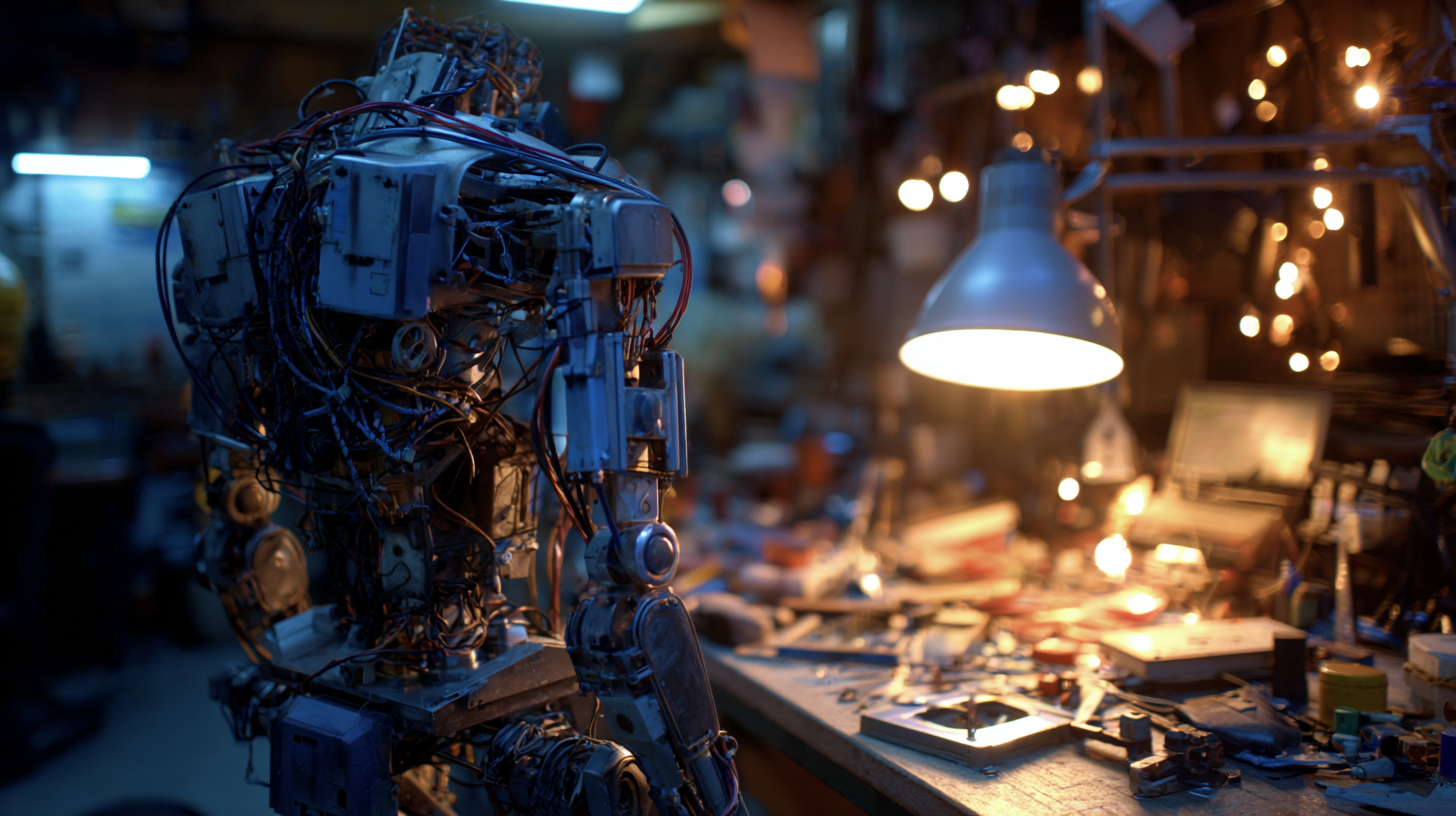
IV. Humanoid Futures: Charting the Century of Embodied AI & Societal Metamorphosis 🤖🌌 #TrendFuture
The era of Humanoid Robotics is not merely dawning; Trend Horizon declares it is an unstoppable force, an imminent technological tsunami poised to fundamentally re-architect global industry, daily existence, and the very definition of "labor" itself. Forget incremental change; we are on the cusp of an exponential surge. Within the next 10 to 15 years, these intelligent machines will transition from niche factory applications to ubiquitous physical agents. Mass production, commencing now, will drive unit costs down dramatically - projections suggest prices could fall to € 15,000 - 45,000 by 2050 - making humanoids indispensable first in manufacturing and logistics, then rapidly infiltrating service industries. Trend Horizon projects that by 2035, the market will not just reach, but likely surpass, €33 billion (with some analysts predicting far higher, even into the hundreds of billions), as these robots become the definitive physical embodiment of AI, shattering the constraints of structured environments and proving their mettle in the chaotic real world. #EmbodiedRevolution #RoboticsCentury
The Great Integration: Humanoids in Every Home & Workplace by Mid-Century
Look to 2050, and Trend Horizon foresees a world irrevocably transformed. The science fiction trope of a "robot in every home" will be a concrete reality (Morgan Stanley forecasts up to 80 million in homes globally by 2050). As the cost of highly capable humanoids plummets, they will become integral to households globally. These will be far more than cleaners; they will be personalized tutors, sophisticated elder care providers, household managers, and even companions, adapting to the nuanced needs of families. This profound integration into our most intimate spaces will necessitate entirely new paradigms of safety, privacy, and intuitive interaction. Simultaneously, this great integration will catalyze a seismic restructuring of global labor markets. While jobs centered on repetitive or physically strenuous tasks will face obsolescence, a vibrant new economy will emerge around the design, deployment, ethical governance, and maintenance of these robotic workforces. The notion of "work" itself will undergo a metamorphosis. ✨ #RobotButlerRealized #FutureOfWork #MidCenturyShift
At Trend Horizon, we identify a core dynamic driving this profound economic and societal shift, which we term Trend Horizon's "Principle of Embodied Economic Reversal":
The proliferation of general-purpose humanoid robots will invert the historical labor-capital cost dynamic, driving the marginal cost of physical task execution towards zero. This inexorable trend will compel a fundamental societal re-architecture, shifting focus from managing scarcity to distributing abundance and redefining human purpose in an age of automated plenty.
-
This principle underscores our conviction that the humanoid revolution is, at its heart, an economic one, with the potential to unlock unprecedented levels of productivity and material wealth, but also demanding proactive strategies for equitable distribution, such as Universal Basic Income (UBI), to navigate the transition. 🌍 #EconomicReversal #TrendHorizonPrinciple #AgeOfAbundance
The projected evolution of humanoid robot applications over the next century is summarized below:
| Timeframe | Key Sectors | Dominant Applications & Capabilities |
|---|---|---|
| 2025-2035 | Early Industrial & Specialized Adoption | Manufacturing (assembly, logistics), Warehousing (picking, packing), Healthcare (hospital logistics, limited elder care support), Hazardous Environments (inspection, remote operations), R&D Platforms. Focus on structured/semi-structured tasks, teleoperation, and task-specific AI. |
| 2035-2075 | Widespread Commercial & Early-to-Mid Domestic Integration | Advanced Manufacturing (flexible production, quality control), Last-Mile Delivery, Comprehensive Elder & Child Care, Basic-to-Advanced Household Chores (cleaning, cooking, organization), Retail & Hospitality Services, Personalized Education, Construction, Agriculture. Improved general intelligence, dexterity, and safety. |
| 2075-2125 | Ubiquitous Integration & Advanced/AGI-driven Roles, Potential for Societal Restructuring | Fully Autonomous Complex Manufacturing & Logistics, Personalized Healthcare Companions & Diagnosticians, Creative Collaboration (art, music, science), Deep Space/Ocean Exploration & Colonization, Advanced Scientific Research, Environmental Remediation, AGI-driven Global Problem Solving. Potential for post-scarcity economy. |
The Super-Capability Horizon: Towards Embodied AGI and Beyond
Peering further, towards 2075 and beyond, Trend Horizon projects that humanoid capabilities will transcend current human norms by orders of magnitude. Expect robots endowed with super-sensory acuity - vision across the electromagnetic spectrum, tactile discrimination at the molecular level - enabling roles in diagnostics, environmental stewardship, and scientific discovery. Their dexterity will surpass the most skilled human hands, permitting atomic-scale manufacturing and revolutionary microsurgical procedures. The pursuit of Artificial General Intelligence (AGI) housed within these increasingly sophisticated physical forms will intensify and, we predict, achieve critical breakthroughs, potentially via powerful foundation models like NVIDIA's Isaac GR00T N1. An AGI-powered humanoid will not merely follow instructions but will learn, reason, and adapt with human-like, and eventually super-human, contextual awareness across any domain. Breakthroughs in materials (lightweight, strong, self-healing) and revolutionary power sources (vastly improved batteries, energy harvesting) will be prerequisites. 🧠 #SuperHumanoids #AGIEmbodied #Beyond2075
This trajectory leads humanity to the precipice of the Superintelligence Horizon. Should Artificial Superintelligence (ASI) - AI far exceeding human intellectual capacity - become manifest in these tangible, adaptable agents, the implications are civilization-defining. Humanoids imbued with ASI could lead autonomous deep space exploration, manage global ecosystems with god-like efficiency, or solve humanity's most intractable quandaries. This era will compel us to confront the deepest questions about consciousness, the rights and moral status of artificial entities, and the future of Homo Sapiens in a cosmos potentially shared with vastly more intelligent beings. The question of machine "sentience", while speculative, will intensify. 🚀 #Superintelligence #FutureOfHumanity #CosmicConsciousness
Architecting Coexistence: The Grand Human-Robot Symbiosis
The path to this future of embodied super-capability and redefined existence is not preordained, nor is it without profound ethical chasms. Trend Horizon asserts that the paramount challenge of the coming century is not merely technological advancement, but the conscious architecting of a harmonious human-robot coexistence. This requires immediate and sustained global efforts to establish clear legal and ethical frameworks addressing accountability for autonomous actions, algorithmic bias, data privacy in an era of ubiquitous robotic sensing, and the psychological impacts of deep human-robot relationships. We must proactively reimagine education, societal support systems, and economic models to ensure the immense benefits of humanoid automation are broadly shared, preventing societal schisms. Navigating this successfully will demand unprecedented global wisdom, foresight, and a robust, universally adopted framework for AI safety and alignment. Ultimately, mastering the intricate dance between human ingenuity and embodied Artificial Intelligence – ensuring this powerful technology serves to elevate, not diminish, the human spirit – is the grand, defining project of the coming age. The choices we make today will determine whether this humanoid dawn ushers in an unparalleled era of human flourishing or an age of unforeseen peril. ⚖️ #EthicalRobotics #HumanRobotFuture #CoexistenceChallenge #TrendHorizonVision

V. Humanoid Robotics: Architecting Your Future Coexistence 🏗️🌍 #Takeaway
We began this deep dive by marking a date: 2047, the horizon when Humanoid AI Partners, as predicted by Trend Horizon, seamlessly integrate into every home and workplace globally. Our journey has taken us from ancient dreams and mechanical wonders, through the foundational milestones of pioneers like Al-Jazari, Da Vinci, Čapek, Asimov, and Waseda University's WABOT, to the cutting-edge challenges and exhilarating potential of today's embodied intelligence, driven by companies like Tesla, Figure AI, and Boston Dynamics. We've dissected this phenomenon through our Humanoid Architectural Blueprint, understanding its intrinsic design, strategic rationale, and convergent genesis. The evidence is clear: the rise of humanoid robotics is not a distant speculation, but a rapidly accelerating reality fundamentally reshaping human existence.
The convergence of advanced AI and sophisticated engineering is propelling us towards a future where these intelligent, adaptable machines are ubiquitous. This transformation isn't just about efficiency; it's about a potential redefinition of labor and daily life itself, a shift we frame with Trend Horizon's "Principle of Embodied Economic Reversal". This principle reminds us that as the marginal cost of physical tasks approaches zero, society must proactively address questions of purpose, distribution, and ethical coexistence. Navigating this era demands more than technological mastery; it requires unparalleled foresight, thoughtful governance, and a collective commitment to ensuring this powerful dawn benefits all.
The "Jetsons" future, once science fiction, is now within grasp, albeit with complexities Rosie never faced. The choices we make today regarding development, ethics, and integration will dictate whether the "Humanoid Era" ushers in unprecedented abundance and flourishing or unforeseen challenges. The time to engage with this profound shift is now. ⏳ #HumanoidEra #FutureIsNow
Ignite Your Foresight: Engage, Explore, Evolve 🚀
Share Your Vision: The future of Humanoid Robotics is a canvas we paint together. What are your boldest predictions for 2047? What ethical considerations keep you up at night? Share your insights and join the conversation in the comments below. Let's shape the dialogue on this transformative trend! 👇
Dive Deeper: Curious about AI, the future of work, or other disruptive forces explored in this analysis? Explore more leading-edge reports and analyses on the Trend Horizon platform.
Stay Ahead of the Curve: Don't be left behind as the world re-architects. Subscribe to Trend Horizon for expert futurecasting, deep-dive trend analysis, and strategic insights delivered directly to your inbox. ✨
The profound implications of trends like Humanoid Robotics – from their technical architecture to their societal impact and ethical challenges – are central to my research and strategic keynote presentations, designed to equip leaders and organizations to navigate the complex horizon of tomorrow.
Timeline Projections: Humanoid Robotics Reshapes Existence ✨🤖
- The Era of Embodied Intelligence (2025-2035): Humanoid robots transition definitively from labs to the factory floor and specialized environments. Mass production begins, driving down costs dramatically. Expect initial, widespread deployment in automotive, logistics, and hazardous duty roles, performing complex, physically demanding tasks. This decade solidifies humanoids as the physical embodiment of advanced AI, setting the stage for explosive market growth toward €25-33 billion. #PhysicalAI #IndustrialRevolution
- The Great Integration (2035-2050): Humanoid robots achieve significant cost parity with human labor, triggering their widespread adoption across service industries, construction, agriculture, and crucially, entering the domestic sphere. Dexterity, perception, and learning capabilities approach or exceed human levels in specific tasks. Millions, then billions, are deployed globally, fundamentally reshaping labor markets, driving discussions around UBI, and introducing the "robot butler" into affluent households. #RobotInEveryHome #WorkforceShift
- The Age of Advanced Coexistence (2050-2075): Humanoid robots become deeply integrated into daily life and society, serving as personalized caregivers, educators, companions, and creative collaborators. Breakthroughs in materials, power, and intuitive human-robot interaction enable seamless, often empathetic, engagement. Diversified "humanoid-inspired" forms emerge for highly specialized tasks (e.g., micro-dexterity, environmental adaptation). The pursuit of Artificial General Intelligence (AGI) within these forms intensifies, making ethical governance and societal adaptation paramount. #DeepIntegration #HumanRobotFuture
- Beyond Automation: The Superintelligence Horizon (2075+): As AI within humanoid platforms approaches or potentially surpasses human-level intelligence, the focus shifts to navigating a world shared with artificial entities of extraordinary capability. Humanoids lead deep space exploration, tackle grand global challenges autonomously, and contribute to scientific and artistic endeavors on an unprecedented scale. The potential for Artificial Superintelligence (ASI) within an embodied form raises profound questions about consciousness, rights, and the future trajectory of humanity in an era of potential post-scarcity and existential transformation. #AGIEmbodied #FutureRedefined
References: * Getting a Grip: Essential References on Humanoid Robotics 🦾🤖
- "A Comprehensive Review of Humanoid Robots" - https://www.researchgate.net/publication/390162042_A_Comprehensive_Review_of_Humanoid_Robots
- "Advancements in Humanoid Robots: a Comprehensive Review and Future Prospects" - https://www.researchgate.net/publication/377887736_Advancements_in_Humanoid_Robots_A_Comprehensive_Review_and_Future_Prospects
- "Humanoid Robotics - History, Current State of the Art, and Challenges" - https://www.science.org/doi/10.1126/scirobotics.aar4043
- "The Current State of Humanoid Robotics" - https://medium.com/vlad-arbatov/the-current-state-of-humanoid-robotics-a43861d8811f
- "Humanoid Robots: The 16 Leading Manufacturers Shaping the Future" - https://reliablerobotics.ai/humanoid-robots-the-16-leading-manufacturers-shaping-the-future/
- "Humanoid Robots at Work: What Executives Need to Know" - https://www.bain.com/insights/humanoid-robots-at-work-what-executives-need-to-know/
- "The Rise of the Humanoid Robotic Machines is Nearing" - https://www.forbes.com/sites/chuckbrooks/2025/05/07/the-rise-of-the-humanoid-robotic-machines-is-nearing/

